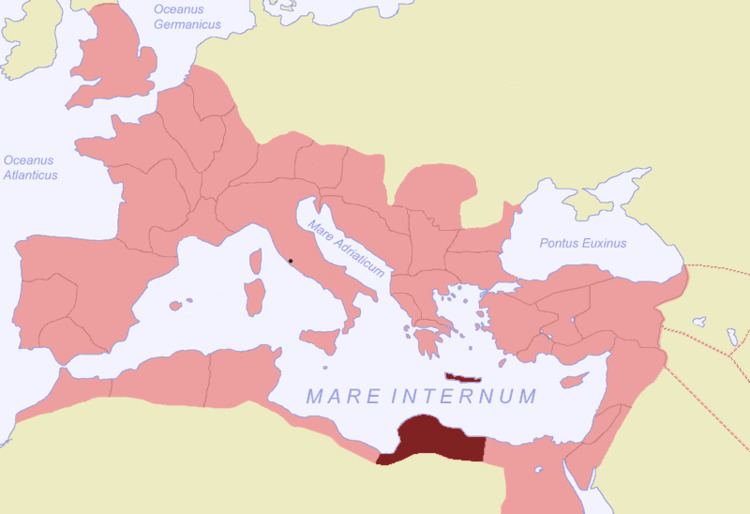20 BC–c. 297 AD → Disestablished c. 297 AD | Established 20 BC | |
 | ||
Crete and Cyrenaica (Latin: Provincia Creta et Cyrenaica) was a senatorial province of the Roman empire, established in 20 BC. It comprised the island of Crete and the region of Cyrenaica in present-day Libya.
Contents
Apion's will and Roman rule of Cyrenaica
Ptolemy Apion, the last king of the Hellenistic Kingdom of Cyrenaica left his kingdom to the Roman Republic when he died childless in 96BCE. Rome readily accepted this inheritance from Ptolemy Apion but preferred to leave the administration to local rulers, rather than enforcing direct control. However, by the 70s BC, civil uprisings by Jewish settlers began to destabilise the province and the Senate was forced to take action. In 74 BC, they sent a low level official, the quaestor Cornelius Lentulus Marcellinus, to officially annex Cyrenaica as a Roman province and restore order. That the Senate sent such a low-ranking official indicates the political difficulty the Republic had in governing its growing empire, as well as indicting the ease with which Cyrenaica was willing to submit to Roman governance and the stability it brought.
Roman conquest of Crete
Marcus Antonius Creticus attacked Crete in 71 BC and was repelled. In 66 BC Rome then commissioned Quintus Caecilius Metellus and following a ferocious three-year campaign Crete was conquered for Rome in 69 BC, Metellus earning the agnomen "Creticus" as an honour for his conquest and subjugation of Crete.
The Roman Province of Crete and Cyrenaica
In 63 BC Crete and Cyrenaica were combined into a single province with its capital at Gortyn in Crete. Because this arrangement was geographically inconvenient Diocletian divided the province in 298.
